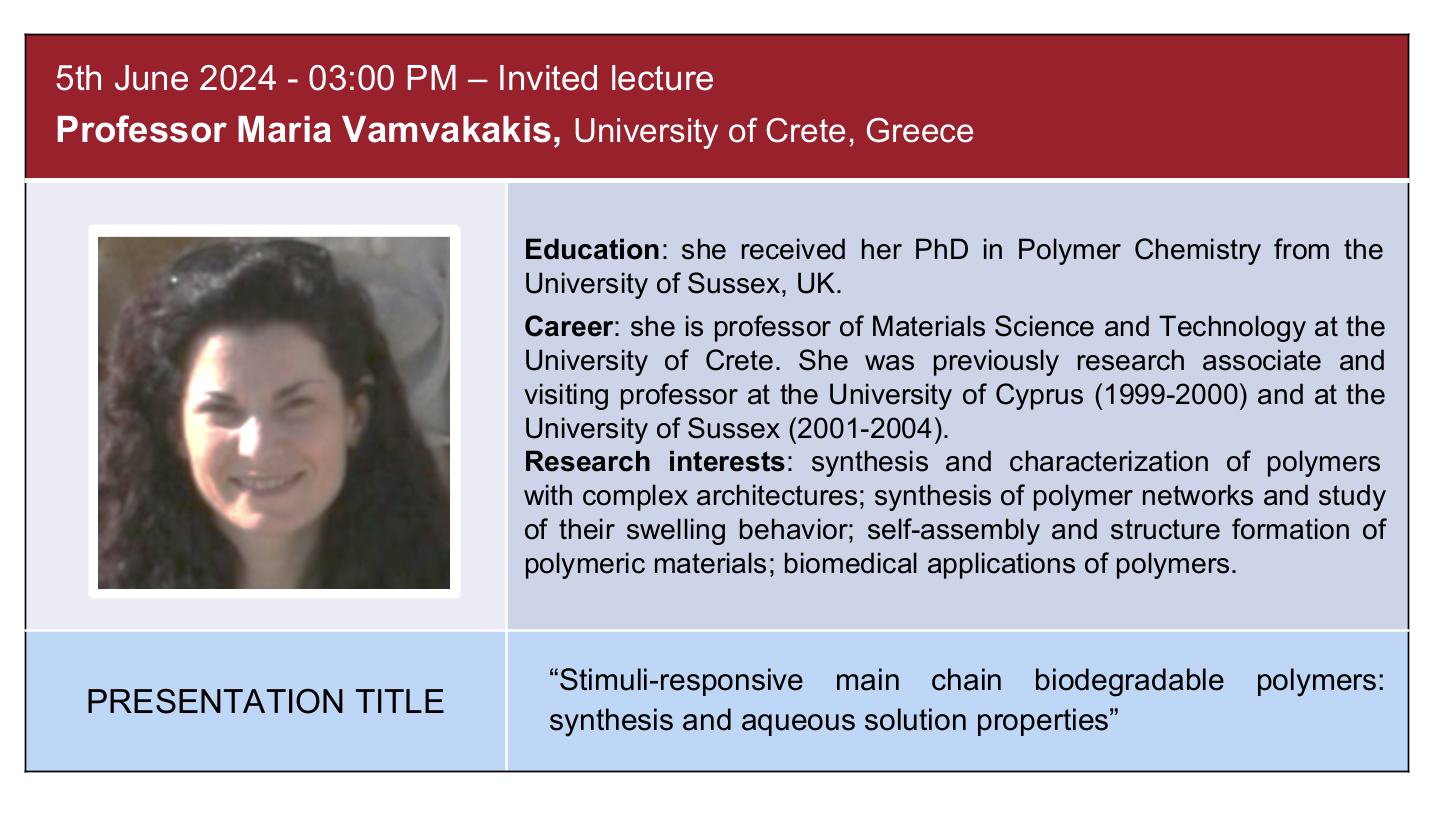Main chain degradable polymers and polymer networks
vamvakak@iesl.forth.gr

Main chain degradable polymers have been extensively employed for use in biomedical applications, including drug and gene delivery and tissue engineering. However, lately considerable attention has been attracted on the on demand main chain polymer degradation using certain external stimuli. Among the different triggers proposed for use to cleave the polymer bonds, light has emerged as a particularly attractive stimulus to induce a photo-mediated main chain polymer degradation because of its spatiotemporal control, as well as its noninvasive nature [1-4]. Light degradable polymers have been proposed for use in photo-patterning, polymer recycling and photo- triggered drug delivery. In this work, novel families of photo- degradable polymers and polymer hydrogels will be discussed. First, transparent, soft, photodegradable and thermo–reversible hydrogels comprising PEG as the elastic strands and dithioacetal linkages at the cross-links, that undergo degradation upon exposure to light, will be presented [5]. By varying the length of the PEG elastic chains, the physicochemical and mechanical properties, including the porosity, photodegradation rate and storage modulus of the hydrogels were altered. Mechanistic studies revealed a chemical recycling process to the initial reagents as the main photoproducts, enlightening the mechanism of network reformation upon heating the system at mild temperatures, as verified by shear rheology experiments. Moreover, the hydrogel successfully underwent reversible photodegradation and reformation upon heating, restoring the initial mechanical properties of the polymer network and thus revealing the re–processability of the system. In the second part, photo- and acid- degradable poly(acylhydrazones) synthesized via a step–growth reaction of dicarbonyl and diacylhydrazide comonomers is presented [6]. The amphiphilic nature of the alternating copolymers, as well as the presence of acylhydrazone groups along the polymer chains, which promote inter– and intra–chain hydrogen bonding interactions, fostered their self–assembly into spherical nanostructures with sizes that were dependent on the molecular structure of the copolymer. The photo–sensitivity of the synthesized copolymers to light was verified by irradiation studies in aqueous solution, while a mechanistic study shed light into the photodegradation mechanism and the produced photoproducts.
References
- T. Chen H. Wang, Y. Chu, C. Boyer, J. Liu, J. Xu ChemPhotoChem 2019, 3, 1059.
- G. Pasparakis, Th. Manouras, P. Argitis, M. Vamvakaki Macromol. Rapid Commun. 2012, 33, 183.
- G. Pasparakis, Th. Manouras, A. Selimis, M. Vamvakaki, P. Argitis Angew. Chem. Int. Ed. 2011, 50, 4142.
- G. Pasparakis, Th. Manouras, M. Vamvakaki, P. Argitis Nat. Commun. 2014, 5, 3623.
- M. Psarrou I. Chatzaki, A. Mavromanolakis, D. Vlassopoulos, M. Vamvakaki 2024, submitted.
- M. Psarrou, M. G. Kothri, M. Vamvakaki Polymers 2021, 13, 2461.